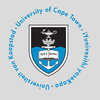RMF10: ‘Not about erasing history’
24 April 2025 | Story Kamva Somdyala. Photos Michael Hammond. Read time 4 min.
“A recurring criticism of the Rhodes Must Fall (RMF) movement was that the call for the statue’s removal was an erasure of history. But it was never just about the statue; the statue was a symbol we could rally around.”
That is the view of 2015 University of Cape Town (UCT) Students’ Representative Council (SRC) president Ramabina Mahapa, speaking to UCT News on the 10th anniversary of the removal of the Cecil John Rhodes statue from UCT’s upper campus on 9 April 2015. Mahapa currently works as a senior associate at Concentric Alliance, a conflict management and development practice.
The movement’s origins can be traced back to late 2014 but gained momentum in March 2015. “I got a call from a fellow SRC member on 9 March [2015] saying, ‘Ramabina, there’s a naked black man throwing faeces at the statue’. My initial thought wasn’t that this was the start of something big,” Mahapa recalled.
Within a month, the statue was gone. Despite Rhodes’s long and complicated history with the university, swift and serious behind-the-scenes discussions accelerated the decision. On 8 April 2015, then Chair of Council Archbishop Njongonkulu Ndungane wrote to the university community.
The Rhodes Must Fall statue debate made headlines far and wide, even after its removal from UCT’s campus.
In his bulletin, he said: “The depth and breadth of feelings on the issue unleashed by the student protest challenged us to accelerate the consideration of the Rhodes statue. This process has been orderly and deliberative, canvassing the views of students, Senate, academic and PASS staff, convocation, alumni and the public. It has certainly been enriched by hundreds of articles in the newspapers, discussions on radio and television and on social media. We have noted the extent of the support amongst all the groupings for removing the statue.
“This process has been vindicated by the number of people who have come into the debates opposed to removing the statue and who have changed their minds as a result of the frank engagement. This is exactly how a university should work, and we believe is an example to the country in dealing with heritage issues.”
Gathering momentum
Mahapa explained that while the public saw a fast-paced campaign, much groundwork had already been laid.
“I wasn’t surprised at how quickly things moved. Conversations between the SRC and management had been ongoing. The pivotal moment came during a Senate meeting. While the SRC and management were initially on opposite ends, once Senate decided on the removal, management shifted too. We still had to consult other stakeholders because of heritage implications.”
When Mahapa took office, he hadn’t expected something like RMF to unfold. “At the time, many black students felt their experiences weren’t being taken seriously. Issues around decolonisation didn’t enjoy a lot of currency.”
While the protests drew criticism for their tactics, they also found solidarity from other institutions in South Africa and abroad. A guiding principle was to avoid disrupting the academic programme.
“We were clear about that among ourselves. If the academic programme was put in jeopardy, then we knew students would not support us. Our goal was to make the university listen, not to shut it down.”
Legacy and impact
Mahapa believes that one of the movement’s lasting contributions is how it created space for broader conversations.
“RMF wasn’t just about a statue. It sparked a wave of student-led dialogue around academic freedom, homophobia, patriarchy, sexual harassment, intersectionality and more. It showed that students could shape the university’s agenda.”
 This work is licensed under a Creative Commons Attribution-NoDerivatives 4.0 International License.
This work is licensed under a Creative Commons Attribution-NoDerivatives 4.0 International License.
Please view the republishing articles page for more information.










